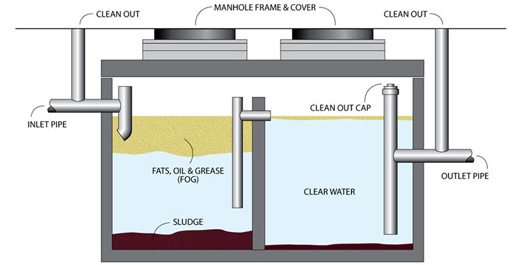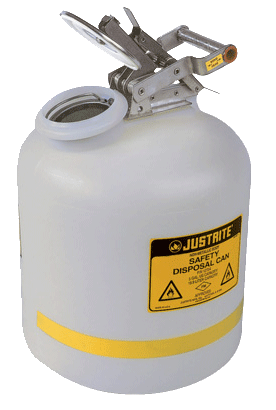Dependable Liquid Waste Disposal Melbourne: Safe and Reliable Providers
Dependable Liquid Waste Disposal Melbourne: Safe and Reliable Providers
Blog Article
Exactly How Liquid Waste Disposal Works: A Thorough Overview of Methods and Technologies Employed

Introduction of Liquid Waste Types
The intricacy of fluid waste types necessitates a complete understanding of their features and ramifications for disposal. Liquid waste can extensively be categorized into numerous kinds, including commercial, metropolitan, farming, and hazardous waste. Each group displays distinct properties, needing details administration strategies to mitigate environmental and health risks.
Industrial fluid waste stems from making processes and typically includes a variety of pollutants, such as heavy steels, solvents, and natural substances. Metropolitan fluid waste, largely making up wastewater from houses and industrial establishments, consists of raw material, nutrients, and virus (industrial wastewater treatment). Agricultural liquid waste, consisting of drainage from ranches, may include fertilizers, pesticides, and pet waste, positioning dangers to water top quality and environments
Unsafe liquid waste is characterized by its toxicity, sensitivity, or potential to cause harm. This classification includes compounds like acids, bases, and certain chemicals that require rigid handling and disposal procedures. Understanding these varied fluid waste kinds is essential for developing reliable disposal techniques and making sure compliance with ecological laws. Appropriate classification and characterization are essential for applying suitable treatment strategies and decreasing the unfavorable effect on public health and the atmosphere.
Physical Therapy Methods

Screening is the preliminary step, where bigger bits and particles are removed from the fluid waste using screens or grates. In sedimentation tanks, much heavier bits resolve at the base, creating a sludge layer, while the clarified liquid can be further dealt with.
Purification is another crucial technique that involves passing the fluid via porous materials, such as sand or membrane layers, to record smaller particles. This action boosts the quality of the liquid, making it appropriate for subsequent treatment processes.

Chemical Therapy Strategies
Chemical treatment techniques are important for properly taking care of fluid waste, especially in attending to liquified and colloidal contaminants that physical techniques might not appropriately remove. These strategies use different chemical representatives to counteract, precipitate, or change harmful compounds right into less harmful forms.
One typical method is coagulation and flocculation, where chemicals such as alum or ferric chloride are contributed to promote the aggregation of suspended particles. This procedure improves sedimentation, permitting for less complicated elimination of the resulting sludge. Furthermore, oxidation processes, using agents like chlorine or ozone, are used to break down complicated organic substances and virus, rendering the waste much safer for discharge or further therapy.
Neutralization is another essential strategy, which adjusts the pH of acidic or alkaline waste streams to neutral degrees, protecting against prospective injury to downstream systems and the environment. Furthermore, progressed oxidation processes (AOPs) utilize combinations of oxidants and ultraviolet light to deteriorate persistent pollutants, accomplishing a higher Your Domain Name level of treatment performance.
Biological Therapy Processes
Organic therapy procedures play a critical function in the administration of liquid waste by using microorganisms to decay raw material and reduce impurity degrees. These procedures can be broadly categorized right into cardio and anaerobic treatments, each utilizing specific microbial areas to accomplish effective waste destruction.
Aerobic treatment entails making use of oxygen to assist in the malfunction of natural materials by microorganisms. This procedure is generally carried out in triggered sludge systems, where aeration storage tanks give a conducive setting for microbial growth, leading to the oxidation of organic toxins. The resultant biomass can be separated from dealt with effluent through sedimentation.
On the other hand, anaerobic therapy happens in the absence of oxygen, counting on various bacteria to damage down raw material. This method is especially useful for high-strength waste, as it produces biogas, a renewable resource source, while reducing sludge manufacturing. Technologies such as anaerobic digesters are often utilized in local and commercial applications.
Both anaerobic and cardiovascular biological therapies not just decrease the environmental effect of fluid waste but likewise promote resource recovery, making them necessary parts of sustainable waste administration methods. Their efficiency, flexibility, and performance support their extensive implementation throughout different markets.
Emerging Technologies in Disposal
Ingenious approaches to fluid waste disposal are home rapidly developing, driven by innovations in technology and a raising focus on sustainability. Among these arising technologies, membrane layer bioreactors (MBRs) have actually acquired grip for their ability to integrate organic therapy with membrane filtration, causing top quality effluent that can be recycled in various applications. MBRs make it possible for smaller sized impacts and more efficient procedures contrasted to typical systems.
Another promising advancement is making use of anaerobic food digestion combined with nutrient healing technologies, which not just treats fluid waste but also produces biogas and recoups beneficial nutrients like nitrogen and phosphorus. This dual benefit improves source performance and minimizes ecological effect.
Furthermore, advanced oxidation procedures (AOPs) are being taken on for the degradation of intricate natural toxins. These approaches make use of effective oxidants and drivers to break down contaminants at the molecular level, offering a highly efficient option for tough waste streams.
In addition, the assimilation of fabricated knowledge and equipment discovering in waste management systems is optimizing functional performance and predictive upkeep, causing decreased costs and boosted ecological conformity. These technologies reflect a substantial shift in the direction of more reliable and sustainable fluid garbage disposal techniques.
Verdict
In conclusion, effective liquid waste disposal necessitates a detailed understanding of different strategies and innovations. The assimilation of physical, chemical, and organic treatment approaches ensures the efficient management of varied waste kinds. Moreover, the introduction of cutting-edge technologies boosts treatment effectiveness and advertises sustainability in waste monitoring practices. By continually advancing these approaches, it becomes feasible to resolve the expanding difficulties associated with liquid waste, ultimately contributing to environmental protection and source healing.
Liquid waste disposal is an essential aspect of ecological administration, requiring a comprehensive understanding of numerous techniques and modern technologies customized to different waste kinds. Fluid waste can extensively be classified right into several kinds, consisting of commercial, metropolitan, agricultural, and dangerous waste. Agricultural fluid waste, consisting of drainage from farms, might consist of plant foods, pesticides, and animal get more waste, positioning dangers to water quality and environments.
Different physical therapy methods play a crucial duty in handling fluid waste properly - industrial wastewater treatment.In conclusion, effective fluid waste disposal demands a comprehensive understanding of various strategies and modern technologies
Report this page